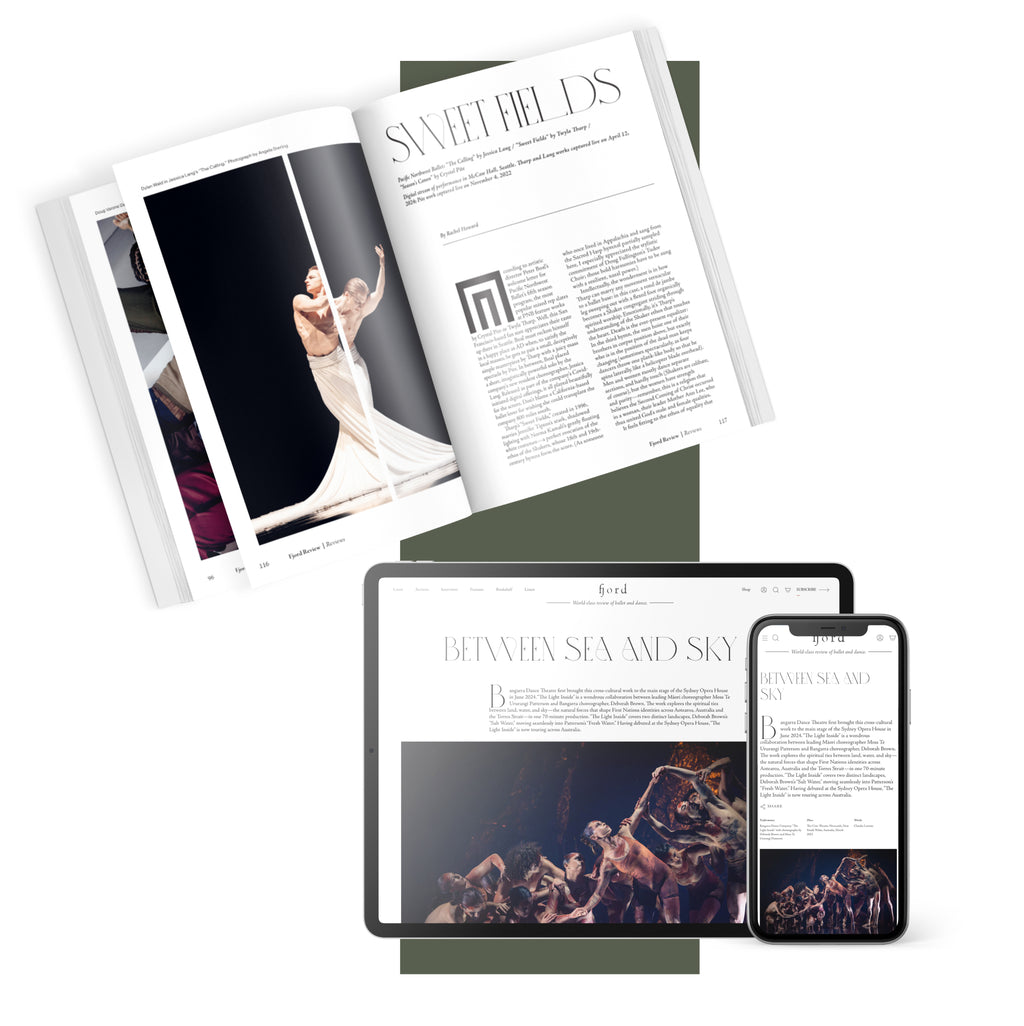Mishima’s Muse
Japan Society’s Yukio Mishima centennial series culminated with “Mishima’s Muse – Noh Theater,” which was actually three programs of traditional noh works that Japanese author Yukio Mishima adapted into modern plays.
Continue Reading
World-class review of ballet and dance.
The title of Catherine Tharin’s latest production, “In the Wake of Yes,” is a reference to “Molly Bloom’s Soliloquy,” an inner monologue on womanhood and sexuality, from James Joyce’s Ulysses. Tharin matches the tone of this work as she picks up on an exuberant string of “yeses” from that text. Her witty series of dances explores romance and its complications. At the center of the show is a film by Lora Robertson that lifts the dancers out of the tiny East Village stage and transports them (and us) to scenes of contemporary New York City. Tharin, who danced with the Erick Hawkins Dance Company from 1988 to 1994, gives us a rare look at the Hawkins tradition, both in the movement style and commitment to artistic collaboration. In addition to Robertson’s film, In the Wake of Yes features original music played live by Joel Forrester and audio compositions by Allan Hunter.
Performance
Place
Words



“Uncommonly intelligent, substantial coverage.”
Your weekly source for world-class dance reviews, interviews, articles, and more.
Already a paid subscriber? Login

Japan Society’s Yukio Mishima centennial series culminated with “Mishima’s Muse – Noh Theater,” which was actually three programs of traditional noh works that Japanese author Yukio Mishima adapted into modern plays.
Continue ReadingThroughout the year, our critics attend hundreds of dance performances, whether onsite, outdoors, or on the proscenium stage, around the world.
Continue ReadingOn December 11th, the Alvin Ailey American Dance Theater presented two premieres and two dances that had premiered just a week prior.
Continue ReadingThe “Contrastes” evening is one of the Paris Opéra Ballet’s increasingly frequent ventures into non-classical choreographic territory.
Continue Reading
comments